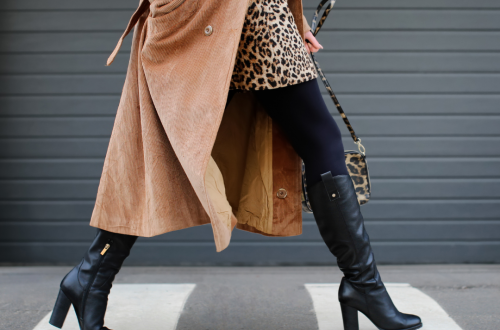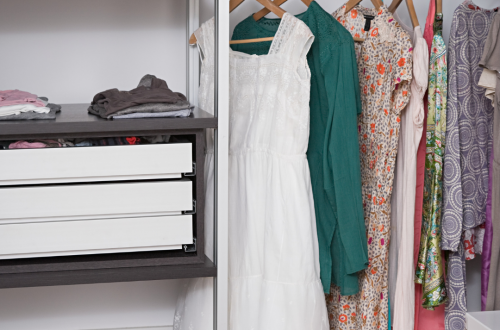
What is Eco Fashion?
Are you tired of fast fashion and its negative impact on the planet? Do you want to make a difference by supporting sustainable and ethical fashion practices?
Then it’s time to explore the world of eco-fashion! In this blog post, we’ll dive into what eco-fashion is all about, why it matters, and how you can be part of this growing movement.
Get ready for some inspiration, education, and fun as we explore the exciting world of sustainable style. Let’s go!
The Different Types of Eco Fashion
Eco-fashion comes in many different styles and forms. There are eco-friendly brands that design and produce sustainable, ethical clothing made from natural and recycled materials. There are also vintage and second-hand stores that sell pre-loved clothing. And then there are thrift stores and consignment shops where you can find good quality, used clothing at a fraction of the cost.
When it comes to eco-fashion, there is something for everyone. Whether you are looking for a new outfit or just want to update your wardrobe, there are plenty of options available. And the best part is that you can feel good about wearing eco-friendly clothing knowing that you are helping to make a difference.
Pros and Cons of Eco Fashion
There are many different types of eco-fashion, and each has its own set of pros and cons. Here are some of the most common:
Organic Cotton
- Pros – Organic cotton is grown without the use of harmful pesticides or chemicals. This means that it is safer for both the environment and the workers who cultivate it. Additionally, organic cotton is extremely soft and comfortable to wear.
- Cons – Organic cotton can be more expensive than conventional varieties. Furthermore, it is often difficult to find organic cotton that is not blended with other fabrics.
Recycled Polyester
- Pros – Recycled polyester is made from post-consumer plastics, which helps to reduce environmental waste. Additionally, recycled polyester is just as durable as virgin polyester, making it a great option for activewear.
- Cons – Recycled polyester can often be less soft and comfortable than other fabrics, such as organic cotton. Additionally, some recycled polyesters may contain harmful chemicals that can leach into the environment.
Bamboo
- Pros – Bamboo is an extremely sustainable and fast-growing resource. As a result, it requires minimal water and energy to cultivate. Additionally, bamboo is very soft, breathable, and anti-bacterial.
- Cons – Bamboo can be difficult to find in certain locations, as it is not as widely available as other fabrics such as cotton or polyester. Furthermore, some companies have been known to market their fabrics as being more sustainable than they are.
Overall, eco-fashion is a great way to reduce your impact on the environment while still looking stylish. Just make sure to research each fabric thoroughly before making your purchase.
Famous Eco Fashion Designers
Many famous eco-fashion designers are making a name for themselves in the sustainable fashion industry. Some of these designers are using sustainable materials to create their clothing, while others are focused on upcycling or repurposing existing clothing.
Stella McCartney is one of the most well-known eco-fashion designers. She uses sustainable materials like organic cotton and linen in her designs. She also avoids using leather and fur in her collections.
Another famous eco-fashion designer is Livia Firth. She is the founder of Eco-Age, a consultancy that works with brands to help them become more sustainable. Firth has also created the Green Carpet Challenge, which encourages celebrities to wear sustainably made outfits on the red carpet.
Eco-fashion designer Emma Watson is also helping to raise awareness about sustainability in the fashion industry. She has partnered with the British brand People Tree to create a capsule collection of ethical clothing.
Alternatives to Eco Fashion
There are many alternatives to eco-fashion, and it can be difficult to know where to start. Here are a few of the most popular options:
1. Fast Fashion
This is the most common type of fashion, and it is what you find in most stores. Fast fashion is made quickly and cheaply, with little regard for the environment or the workers who make the clothing.
2. Secondhand Clothing
Buying secondhand clothing is a great way to save money and reduce your impact on the environment. There are many places to find secondhand clothing, including thrift stores, consignment shops, and online resale sites.
3. Vintage Clothing
Vintage clothing is another great option for those looking for sustainable fashion. Vintage clothing is often better made than modern clothing, and it has a unique style that you can’t find anywhere else.
4. DIY Clothing
Making your clothes is a great way to save money and reduce your impact on the environment. You can make your clothes from scratch, or you can upcycle old clothes into new garments.
5. Ethical Fashion
Ethical fashion is clothing made with respect for the environment, workers, and animals. Companies that make ethical clothing often use organic materials and fair trade practices to ensure their garments are produced responsibly.
Eco-fashion is an important movement to embrace if we wish to ensure a sustainable future for our planet. By increasing awareness and availability of eco-friendly materials, we can encourage more people to consider the environmental impact of their clothing choices.
With so many options available, it has never been easier or more stylish to make conscious decisions when shopping for clothes. As demand increases and innovations in fabrics continue, eco-fashion will become even more accessible and attractive to everyone who wants beautiful pieces that also do good for our planet at the same time.





